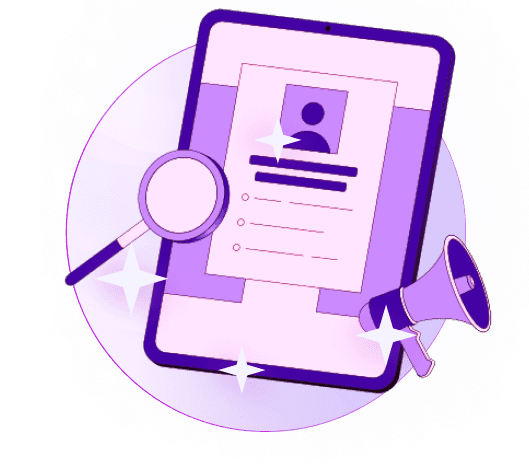Blogs
Articles

6 Steps to Optimize Your B2B Visitor Tracking for Improved ROI
In today’s fast-paced digital landscape, understanding your visitors is more crucial than ever, especially for B2B businesses. With the right visitor tracking mechanisms in place, you not only enhance your marketing efforts but also maximize your return on investment (ROI).
So, if you’re ready to dive deeper into your analytics and truly understand how your visitors interact with your site, you’re in the right place!
Here’s a friendly, step-by-step guide to optimizing your B2B visitor tracking.
Step 1: Define Your Goals Clearly
Before we dive into the technical nitty-gritty, let’s take a step back and focus on what you want to achieve. Are you looking to increase conversions? Improve lead generation? Or maybe you’re keen on enhancing customer engagement? Defining clear, measurable goals is the foundation of effective visitor tracking. This way, you’ll know exactly what metrics to focus on and how to tailor your tracking strategies.
Practical Tip:
Create SMART goals—Specific, Measurable, Achievable, Relevant, and Time-bound. For example, instead of saying “increase website traffic,” try “increase website traffic by 20% over the next quarter.” This clarity will guide all your tracking efforts.
Step 2: Choose the Right Tools
Now that your goals are set, it’s time to select the right visitor tracking tools. There are many options available, from Google Analytics to more specialized B2B tracking solutions like HubSpot or Mixpanel. Choose a tool that not only tracks general visitor metrics but also provides insights tailored to B2B marketing, such as company identification and user engagement metrics.
Practical Tip:
Look for tools that offer seamless integration with your existing systems. This can save you headaches down the line and streamline your data analysis process.
Step 3: Implement Comprehensive Tracking Codes
With the right tools in your arsenal, the next step is to implement tracking codes across your website. Ensure that every page has the necessary codes for collecting data. Remember, it’s important to capture not just page views but also events—like downloads, sign-ups, and clicks on key buttons.
Practical Tip:
Consider utilizing UTM parameters for your marketing campaigns. They’re incredibly useful for tracking the success of specific ads or content pieces, giving you greater insight into what drives your visitors.
Step 4: Analyze Visitor Behavior
Once your tracking codes are in place, the real fun begins! Start examining how visitors interact with your site. Look out for patterns in behavior to determine where visitors are dropping off, which content keeps them engaged, and what paths lead to the highest conversions.
Practical Tip:
Use heatmaps to visualize visitor interaction. Tools like Hotjar or Crazy Egg can show you where visitors click or scroll, which can reveal valuable insights about user experience and content effectiveness.
Step 5: Optimize Based on Insights
As you analyze the visitor data, don’t sit back—take action! Use these insights to optimize your website and content. This might involve A/B testing landing pages, tweaking headlines, or repositioning calls-to-action. The goal here is to create an intuitive and engaging experience that aligns with your users’ expectations and desires.
Practical Tip:
Don’t be afraid to iterate. The digital landscape is always evolving, and so are your visitors’ preferences. Regularly revisit and refine your strategies based on real-time data.
Step 6: Integrate Visitor Tracking with Your Sales Process
Finally, to truly capitalize on your B2B visitor tracking efforts, integration with your sales process is key. Ensure that the data you collect doesn’t just sit idle; use it to inform your outreach and nurture strategies. For example, if a company visits your pricing page, that’s a hot lead!
Practical Tip:
Consider leveraging AI-powered tools like Persana.ai to enhance your sales prospecting. Our platform can help you generate targeted lead lists, enrich data to better inform your teams, and integrate with various outbound tools. By automating these processes, you’ll not only save time but also ensure that your sales efforts are more aligned with the insights gained from your visitor tracking.
Conclusion
B2B visitor tracking isn’t just about collecting data; it’s about harnessing that data to foster meaningful connections and drive growth. By following these six steps—defining clear goals, choosing the right tools, implementing comprehensive tracking, analyzing behavior, optimizing based on insights, and integrating with your sales process—you’ll put yourself on the path to improved ROI.
Looking to take your sales prospecting to the next level? Explore how Persana.ai can streamline your process by generating lead lists and enriching your data, helping you effortlessly identify your next big opportunity. Remember, informed decisions lead to better outcomes, and with the right tools and strategies in place, your B2B business can thrive.
So, roll up your sleeves, dive into your analytics, and start turning those visitor insights into powerful ROI!

Create Your Free Persana Account Today
Join 5000+ GTM leaders who are using Persana for their outbound needs.
How Persana increases your sales results
One of the most effective ways to ensure sales cycle consistency is by using AI-driven automation. A solution like Persana, and its AI SDR - Nia, helps you streamline significant parts of your sales process, including prospecting, outreach personalization, and follow-up.



